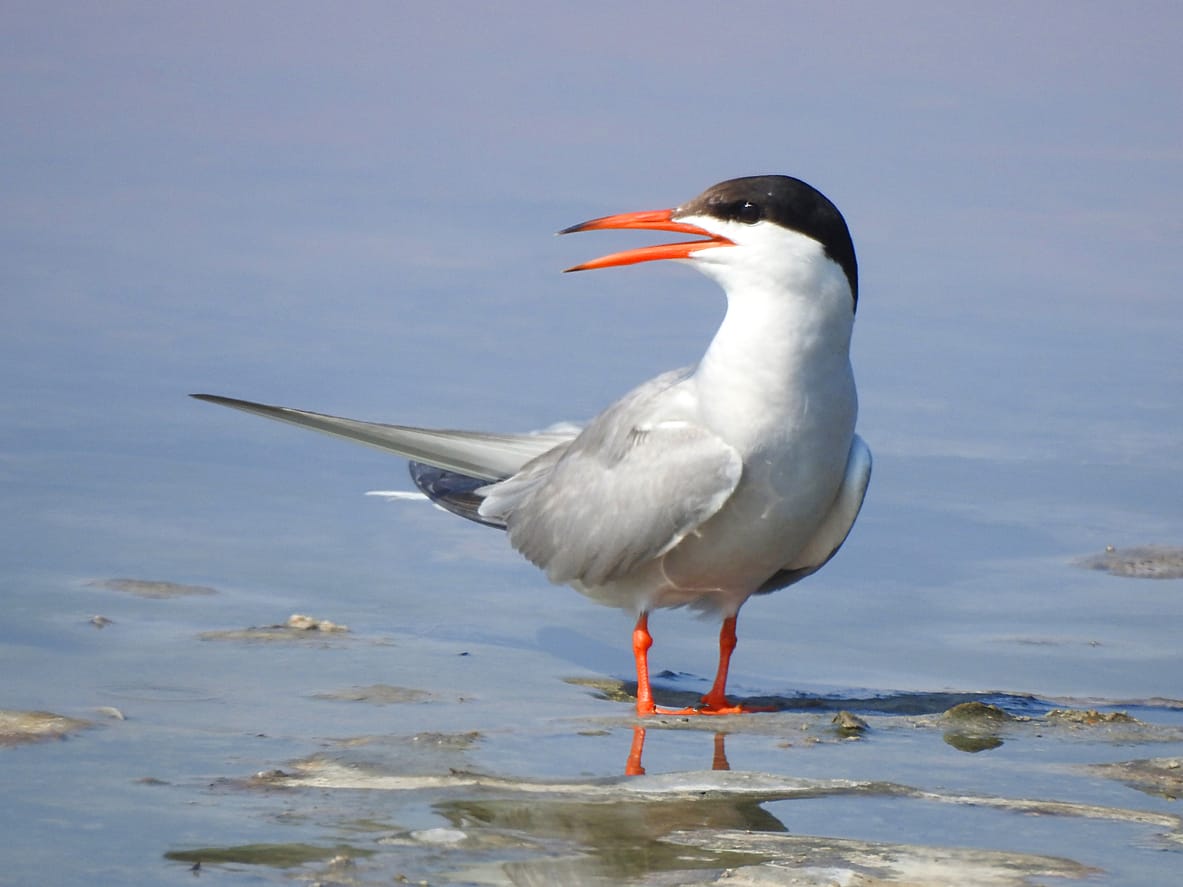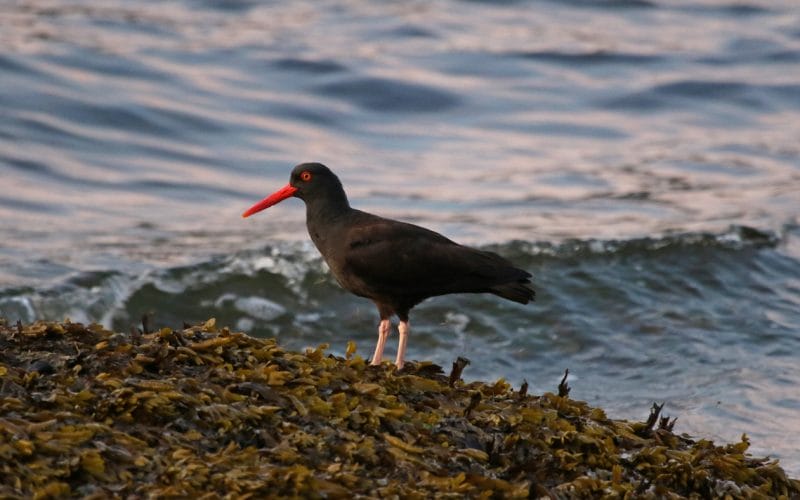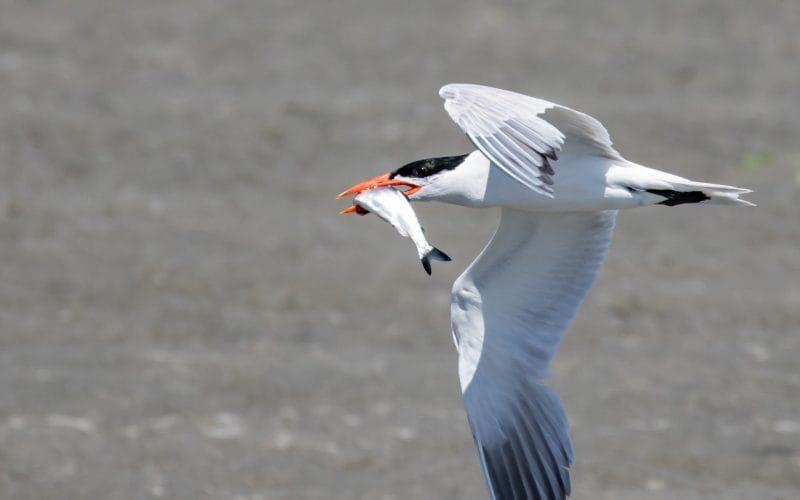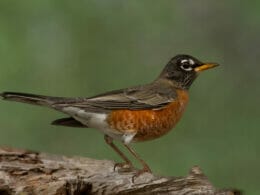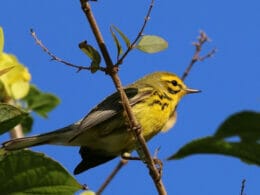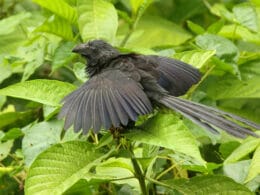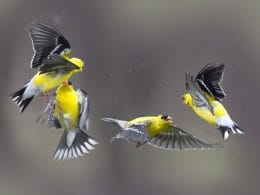Despite its small size, the indented coastline of Maine is about 3,478 miles, which makes it a state with a longer coastline than the state of California! With that vast coast, it’s easy to say that the variety of Maine seabirds is unrivaled.
If you want to find out more about the variety of birds in Maine, you’ve come to the right place! In today’s article, we will walk you through 17 of the most incredible species of seabird in The Pine Tree State.
Let’s dive right in!
1. Atlantic Puffin
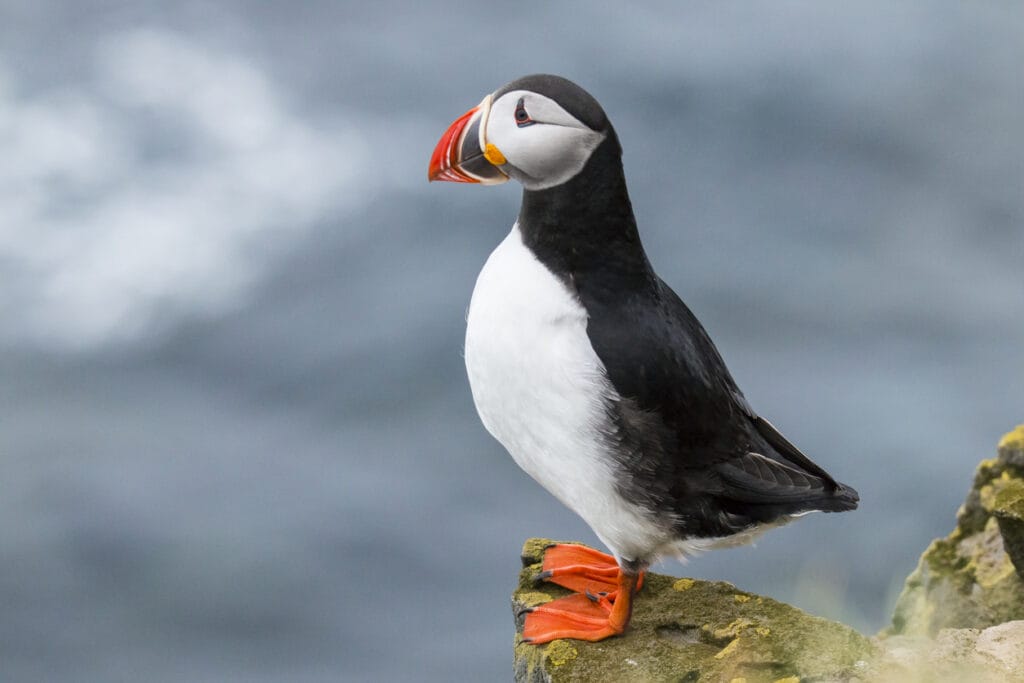
- Scientific Name: Fratercula arctica
- Length: 10.2 to 11.4 in
- Weight: 10.9 to 19.4 oz
- Wingspan: 20.8 to 21.1 in
Kicking off the list with one of the iconic birds to come across in the state. In fact, Maine’s ocean islands are the only parts of the United States where you can find nesting sites for these seabirds!
Top Tip: The bird has a characteristic appearance with a black back, white underparts, and a triangular parrot-like orange and black bill!
Atlantic puffins’ feet help them dive in shallow water to catch small-sized fish like herrings and sand lances.
2. Laughing Gull

- Scientific name: Leucophaeus atricilla
- Length: 15.3 to 18.1 in
- Weight: 7.2 to 13.1 oz
- Wingspan: 36.2 to 47.2 in
Maine is the Northernmost point where laughing gulls may breed. You can find the bird hovering around the small islands on Maine’s coast, especially Eastern Egg Rock where they feed on crustaceans and small fish.
Laughing gulls usually change in color depending on the season, as the adults have a dark black hood that covers their face and neck with white around the eye during the summer.
These colors fade in light gray in the winter. The bird also has reddish legs and peaks, especially in summer.
3. Herring Gull

- Scientific Name: Larus argentatus
- Length: 22.1 to 26.0 in
- Weight: 28.2 to 44.1 oz
- Wingspan: 53.9 to 57.5 in
Herring gulls are easily identified by their distinctively loud calls rather than appearance and their light pink legs. The adult birds have white underparts and heads with a yellow slender peak and gray wings.
Similar to laughing gulls, herring gulls also feed on small fish, insects, and crustaceans. They can also scavenge carrion and food remains, and live on the west coast.
4. Common Tern
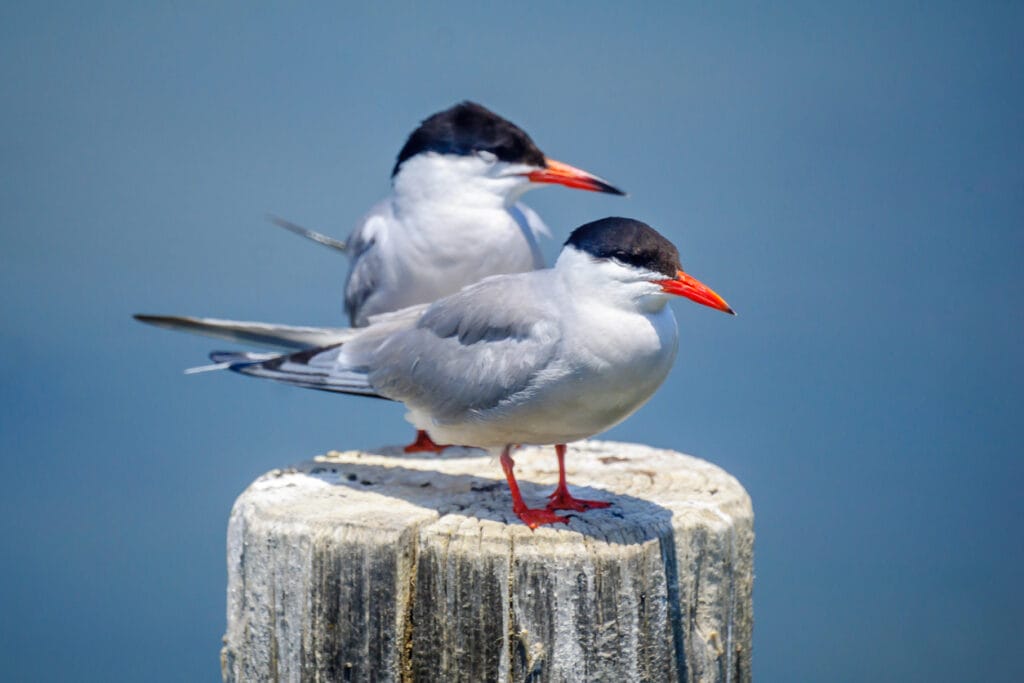
- Scientific Name: Sterna hirundo
- Length: 12.2 to 15.0 in
- Weight: 3.3 to 7.0 oz
- Wingspan: 29.5 to 31.5 in
As the name suggests, the common tern is the easiest tern species to find in Maine. This bird is slightly smaller than American crows and has a generally slick white body with a black cap that covers the bird’s head and nape.
The bird has a long, thin bill that is orange with dark tips. The orange of the bill is the same shade as their orange legs. The bird flies above rocky islands where it catches small fish to feed.
5. Roseate Tern

- Scientific Name: Sterna dougallii
- Length: 13.0 to 16.1 in
- Weight: 3.2 to 4.9 oz
- Wingspan: 26 to 30 in
Roseate tern is on Maine’s top protection and preservation plan because of its Federal endangered status, so it’s quite rare to spot on.
The bird has a build similar to common terns, except that its bill is thinner and shorter while its tails are longer. The bird has a similar diet and coloration pattern as common terns, except for rose-colored underparts that are quite difficult to spot from a distance.
6. Arctic Tern

- Scientific Name: Sterna paradisaea
- Length: 11.0 to 15.3 in
- Weight: 3.2 to 4.2 oz
- Wingspan: 25.6 to 29.5 in
Another tern species that you can find in Maine is the arctic tern. This one also has the same build and color patterns as common tern, except that it’s slightly stockier with thinner, shorter necks and bills, which makes the arctic tern look more compact than other terns in Maine.
Author Note: Like the previous two, Arctic terns like to feed on fishes near the surface of the water, including sand eels, sand lances, smelt, etc.
7. Great Cormorant
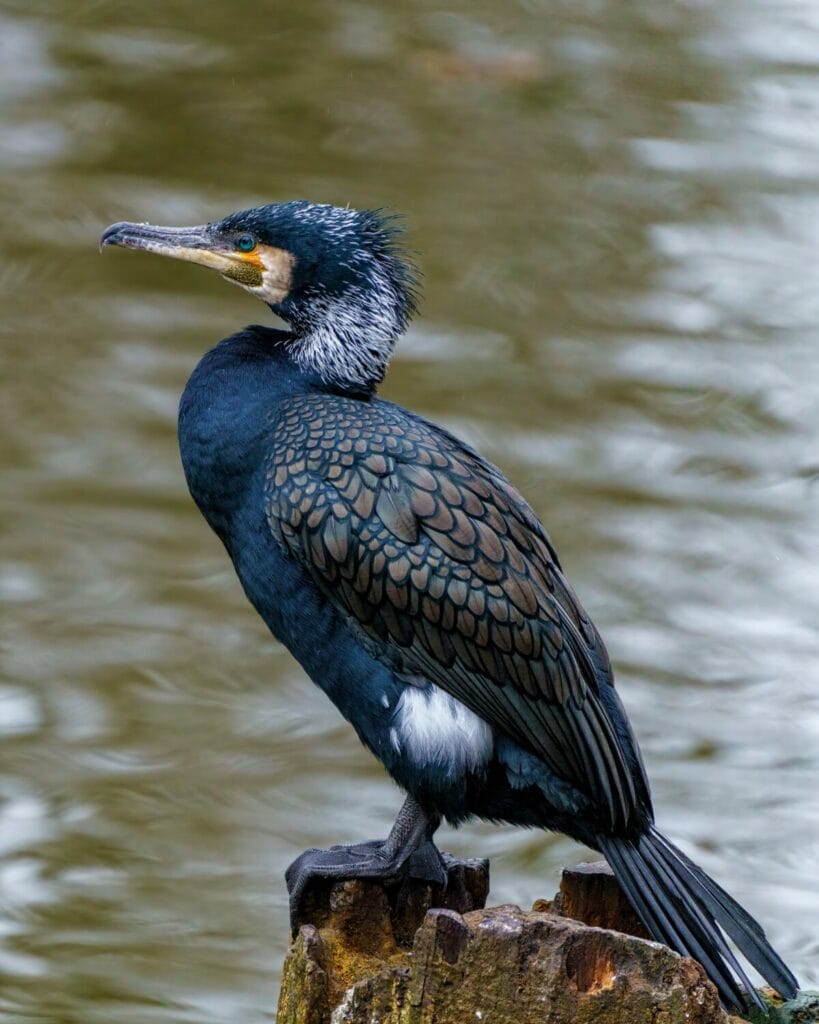
- Scientific Name: Phalacrocorax carbo
- Length: 33.1 to 35.4 in
- Weight: 91.7 to 130.5 oz
- Wingspan: 51.2 to 63.0 in
The great cormorants are commonly spotted in Maine during the winter season, especially in the gulf region.
The bird is easily identifiable thanks to its unique looks. The large bird is mostly black with long necks that give the same impression as a vulture. It also has a white patch at the throat area with a yellow bill that helps it feed on small fish and crustaceans.
8. Northern Gannet

- Scientific Name: Morus bassanus
- Length: 36.8 to 43.3 in (males) | 36.4 to 40.9 in (females)
- Weight: 87.1 to 122.4 oz (males) | 90.7 to 127.3 oz (females)
- Wingspan: 70.9 to 72.4 in
The Northern Gannet is the largest of gannets in the world. The bird is commonly found in Maine but it also extends up north through Canadian islands of the Atlantic.
These large birds feed on fish only and have a remarkably smooth white body with soft fading into off-white or light buff around the nape area. The bird also has black tips in the feathers of their wings, which makes them identifiable from a distance.
9. Common Eider

- Scientific Name: Somateria mollissima
- Length: 19.7 to 28.0 in
- Weight: 45.9 to 92.1 oz
- Wingspan: 37.4 to 38.6 in
Common Eiders are slightly smaller than geese but are very easy to identify thanks to their triangular heads with orange/yellow peaks and light green coloration at the back of their neck.
They also have white backs, gray wings, and black underparts.
These Eiders usually gather in large flocks and are usually found far east into the coast of Maine where they feed on mollusks, sea urchins, marine worms, and fish eggs.
10. King Eider
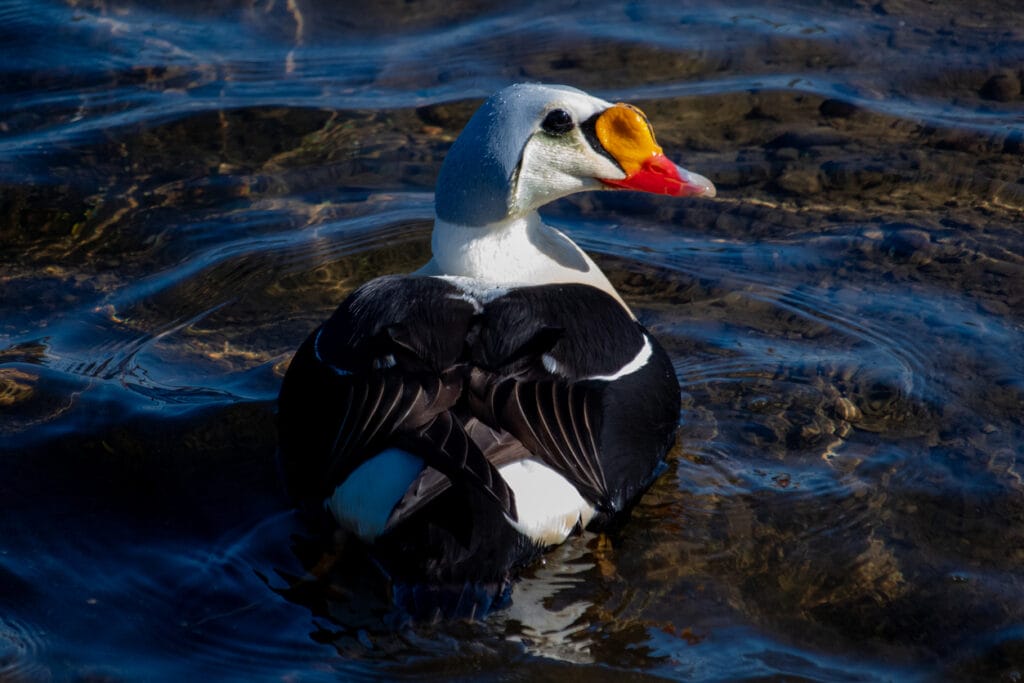
- Scientific Name: Somateria spectabilis
- Length: 18.5 to 25.2 in
- Weight: 42.3 to 74.1 oz
- Wingspan: 34.1 to 39.9 in
Despite belonging to the same family of seabirds, king eiders are very easy to distinguish from common eiders thanks to the unique structure of the head.
Top Tip: Unlike common eider, the king eider has a square-shaped head with a flat top and a short small bill that is vibrant red and yellow.
Even the green patch at the back of the neck is more obvious in this species, especially with the bluish-gray nape.
11. Iceland Gull
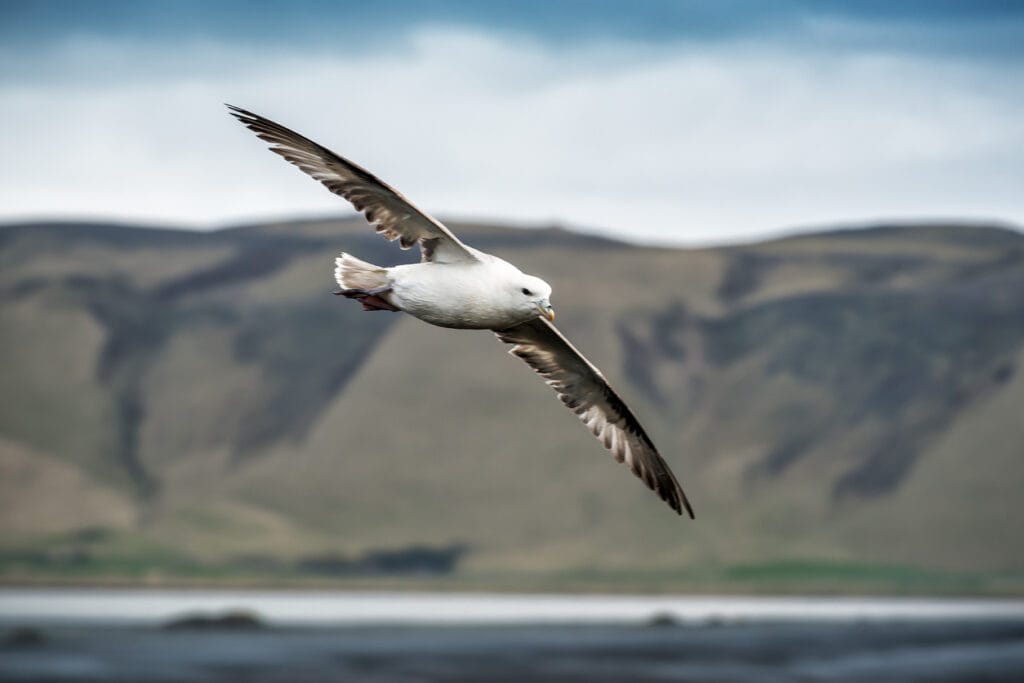
- Scientific Name: Larus glaucoides
- Length: 19.7 to 23.6 in
- Weight: 28.9 to 38.8 oz
- Wingspan: 45.3 to 53.9 in
The Iceland gull isn’t a resident of Maine but often migrates to warmer regions during the winter. Similar to other species of gulls found in Maine, this one has very thin pinkish legs and slender bills.
The bird is generally white to pale gray all across its body with yellow distinctive eyes. They usually mingle with other flocks of gulls because they have the same diet and behaviors so they easily stand out.
11. Razorbill

- Scientific Name: Alca torda
- Length: 16.8 to 17.1 in
- Weight: 17.8 to 31.4 oz
- Wingspan: 24.8 to 26.8 in
Razorbills belong to the family of Auks, so they’re related to puffins. However, they have an extremely unique look with a jet black head, neck, and back, along with white underparts.
Razorbills have a relatively large bill with a characteristic vertical white line at the end of the bill and another white band at the end of the wings.
12. Surf Scoter
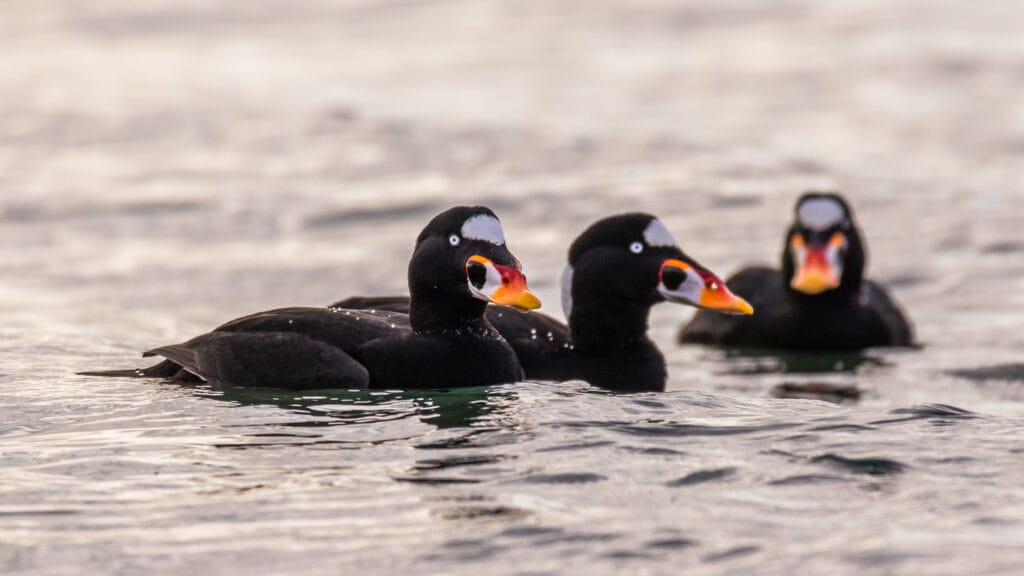
- Scientific Name: Melanitta perspicillata
- Length: 18.9 to 23.6 in
- Weight: 31.8 to 45.6 oz
- Wingspan: 29.9 to 30.3 in
Surf scoters are medium-sized sea ducks with a distinct appearance. The males of this species are mostly black with a large orange bill and a white spot at the nape. The females have a similar body structure but are mostly brown.
These birds feed almost exclusively on clams, mussels, and marine snails, although they can also eat other items, such as marine vegetation and small crabs.
13. Great Black-backed Gull
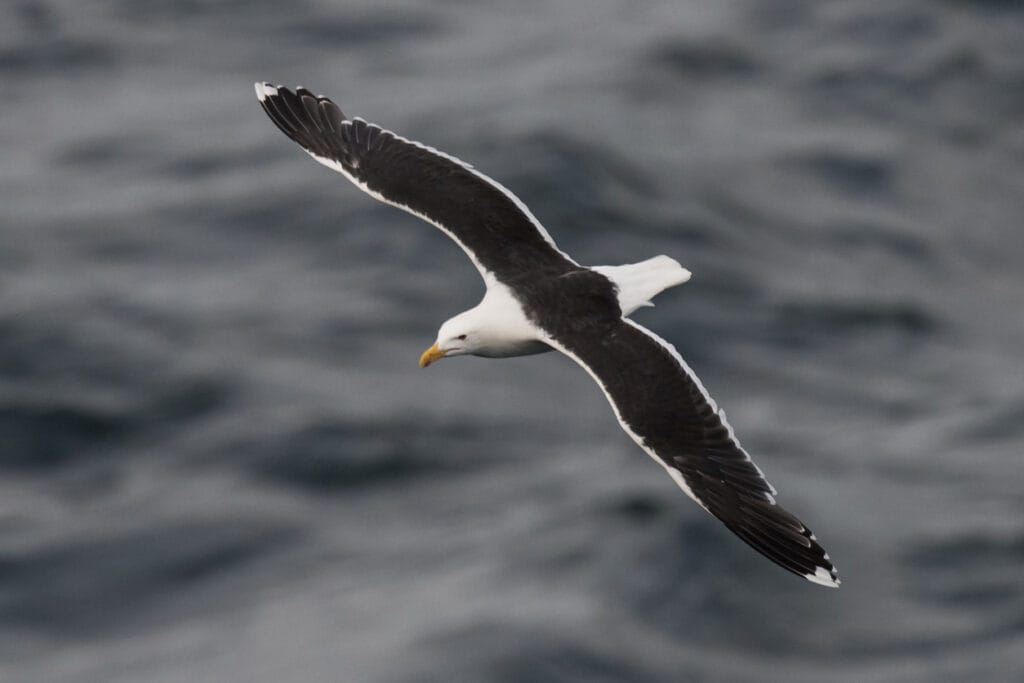
- Scientific Name: Larus marinus
- Length: 27.9 to 31.1 in
- Weight: 45.9 to 70.5 oz
- Wingspan: 57.5 to 63.0 in
The great black-backed gull is the largest gull in the world and one of the most aggressive. In addition to its size, the gull is easy to identify by its black plumage across the back and wings, which is where it has got its name.
These birds always nest by the coasts of Maine and become rarer as you enter the mainland. As a scavenger omnivore, this gull will eat anything from worms, berries, and insects to mollusks, fish, crustaceans, and even the eggs of some other birds.
14. Barnacle Goose

- Scientific Name: Branta leucopsis
- Length: 22.1 to 27.9 in
- Weight: 43.2 to 78.4 oz
- Wingspan: 51.2 to 57.1 in
The barnacle goose is one of the rarest seabirds in Maine, but their numbers have been recovering all over the world due to the efforts of wildlife preservation organizations.
This bird is characterized by its white face and black coloration that extends from the top of the head all the way down to the neck. The wings are more grayish and alternate with white all the way across the wing and tail.
Top Tip: Although they live in the rocky islands of the Atlantic, they’re mostly herbivores that feed on aquatic vegetation and sea moss.
15. Common Murre

- Scientific Name: Uria aalge
- Length: 15.0 to 16.9 in
- Weight: 28.2 to 39.7 oz
- Wingspan: 25.2 to 27.9 in
The common murre also belongs to the family of Auks, which explains their similarities with razorbills and puffins.
These birds gather in huge flocks and are identified by their bi-colored body of white underparts and black head, neck, back, and wings.
You can also find a noticeable white ring that has a line extending backward, which is known as a “bridle”. The bridle is usually more noticeable during the breeding season.
16. Black Guillemot

- Scientific Name: Cepphus grylle
- Length: 11.8 to 12.6 in
- Weight: 11.3 to 17.1 oz
- Wingspan: 20.5 to 22.8 in
Also known as “tysties”, these birds are native to the North Atlantic coasts and rock a mostly jet black body except for a large white patch on their wings and the flaming red legs that extend forward.
Author Note: The bird likes to nest on the rocky islands extending across the ocean and mainly feeds on small fish in the area, but they can also be seen snacking on crustaceans and mollusks.
17. Leach’s Storm petrel

- Scientific Name: Hydrobates leucorhous
- Length: 7.6 to 8.0 in
- Weight: 1.8 to 2.8 oz
- Wingspan: 16.9 to 18.8 in
Lastly, we have the leach’s storm petrel, which is named after William Leach. This bird appears to be black at first glance, but it’s actually a very dark shade of brown that is usually fader towards the shoulder area.
These birds usually like to hang around the areas where water currents of different temperatures meet, so they can catch and enjoy their favorite food, such as small fish, crustaceans as well as marine drifters, and planktons near the surface of the ocean.
Wrap Up
There you have it! A complete guide that walks you through 17 of the most iconic species of seabirds that you can find in The Pine Tree State.
As you can see, the seabird variety in Maine is unmatched. You should keep in mind that most of these species are protected by the government, so make sure that you let the authorities know if you find any of these species in bad shape.
FAQ
The Northern Gannet is a large white bird with a pale orange head and dark wingtips. It flies along the coastline and out to sea.
In 2021 a Steller’s Sea Eagle was first seen along the coast of Maine causing quite a commotion. It has been seen a couple of times since, the last time was Feb 2023.
Shearwater are so named because they skim the water as they fly. There are 5 species that may be seen off the coast of Maine. To see them, you would need to be on a pelagic boat trip.
A Yellow-nosed Albatross was seen off the coast of Maine in 2017. This is the only reported sighting of an albatross here. They are very rare in this part of the northern hemisphere.




